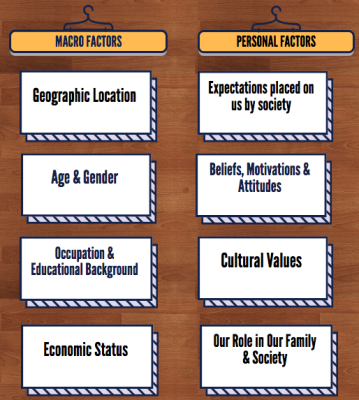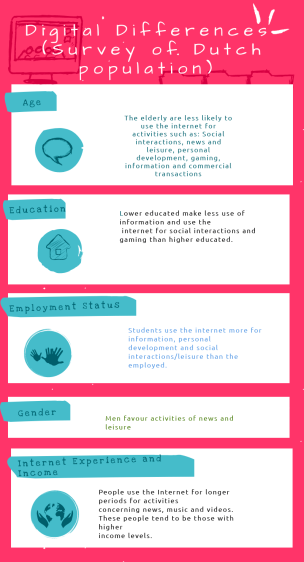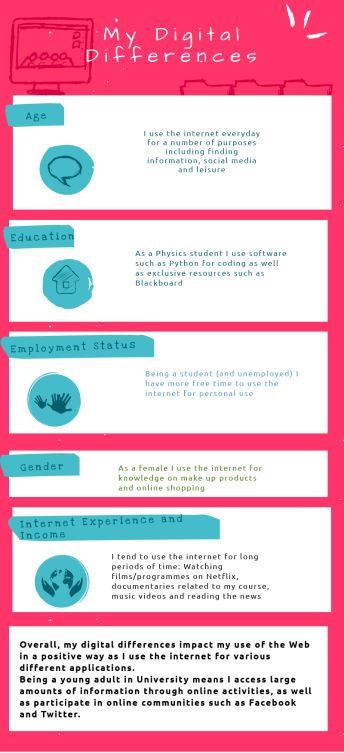Initially, I wasn’t aware how the term ‘digital differences’ applied to me; I assumed it referred to technical differences between certain technologies i.e. laptops vs tablets.
After participating on MOOC, and researching the concept further, I gained a better understanding and opinion on the topic and appreciation for the technology I have. After reflecting on my previous blog, I realise on a larger scale I am more of a digital resident than others (in third world countries) and I should utilise tools such as MOOC more, as others aren’t as fortunate to. 
It was interesting to explore which factors had a greater impact on the digital divide and how it differed among various societies. Discussing this with Karishma, I realised I agree with Van Deursen & Van Dijk’s research; factors, such as age, may have a more prominent effect on the divide among populations similar to the Netherlands.
Although, Nathaniel addressed an important concern around disability, introducing me to a GuardianPost which explained how some UK users with additional needs are at a disadvantage when using the Web. I referred to the National Government Inclusion Strategy, enforced in the UK, to address this issue and even tackle this divide globally – however, Nathaniel pointed out that due to a lack of funding in other countries it will be hard to apply this strategy elsewhere and close the gap as effectively. This made me realise all factors have a significant impact on users in different ways and the digital gap varies on mainly two scales:

Though, not all aspects of the divide are negative as Chloe highlights the importance of digital differences allowing us to reflect on our daily activities online and offline and even motivate us to use technology more. Personally, I agree to an extent as being aware of digital difference makes me appreciate the technology I have around me. However, I support groups like GSMA who aim to give more users a digital identity worldwide and diminish the divide.
My comment on Nathaniel’s blog
(Word Count: 329)
References:
- GSMA, (2016). Regulatory and Policy Trends Impacting Digital Identity and the Role of Mobile, (Available at: http://www.gsma.com/ mobilefordevelopment/ programmes/digital-identity) [Accessed 3 Mar. 2018]
- Rust, E. (2015). How the Internet Still Fails Disabled People, The Guardian, [Accessed 3 Mar. 2018]
- Maude. F, (2014). Government Digital Inclusion Strategy [Accessed 3 Mar. 2018]
- Future Learn, (2017). Future Learn. Digital differences – inequalities and online practices [Accessed 25 Feb. 2018]
- Halford, S. and Savage, M. (2010) Reconceptualizing Digital Social Inequality, Information, Communication & Society, 13: 7, 937 — 955 [Accessed 25 Feb. 2018]
- Zickuhr, K. and Smith, A. (2012). Digital Differences, Pew Internet, (Pew Research Center) [Accessed 25 Feb. 2018]
- Van Deursen, A. and Van Dijk, J. (2013) The Digital Divide Shifts to Differences in Usages, Sage Journals, 16:3 [Accessed 25 Feb. 2018]
-
Damarin, S. (2000) The ‘Digital Divide’ Versus Digital Differences: Principles for Equitable Use of Technology in Education, Education Technology, 40:4, 17-22 [Accessed 25 Feb. 2018]




